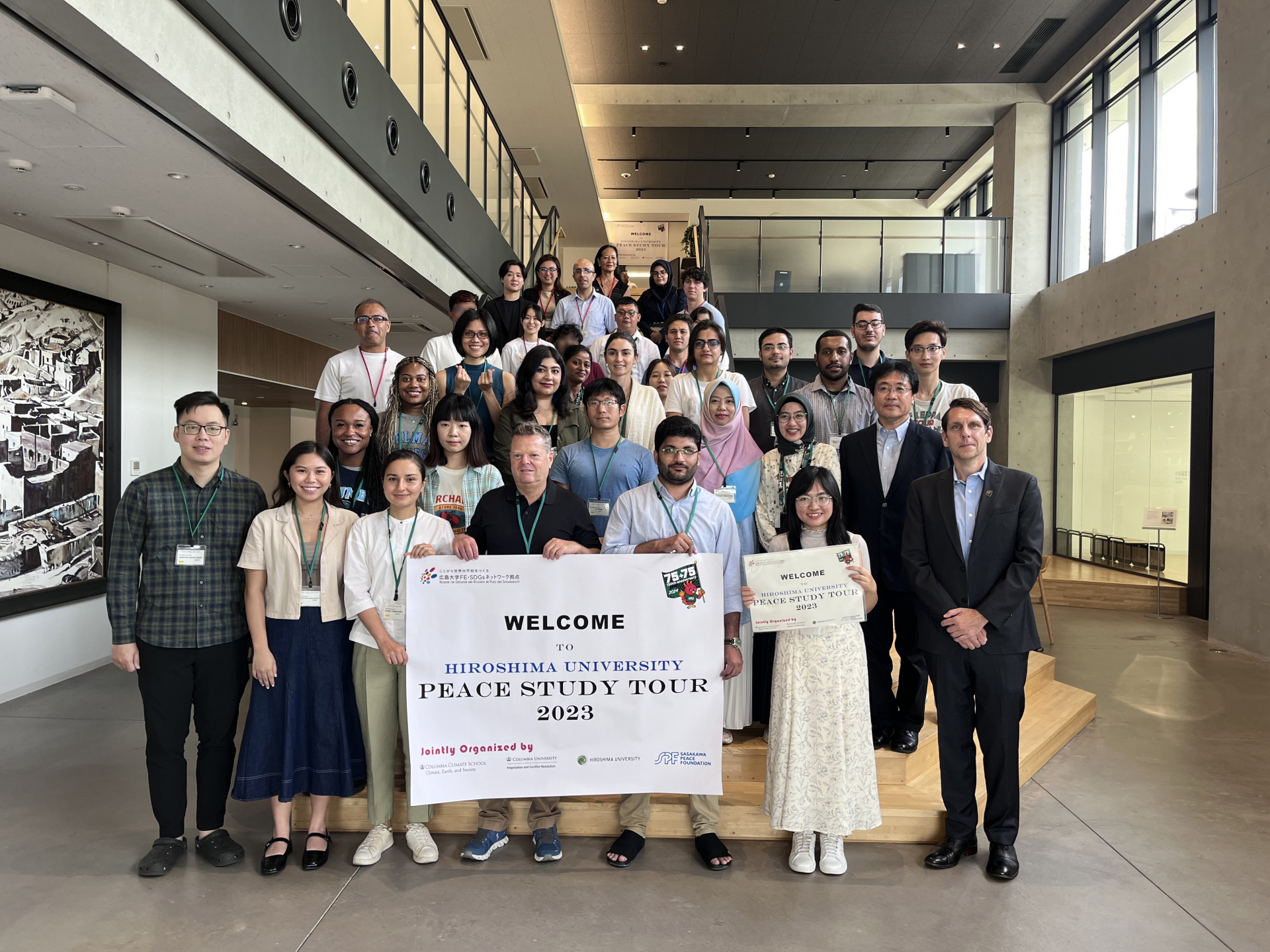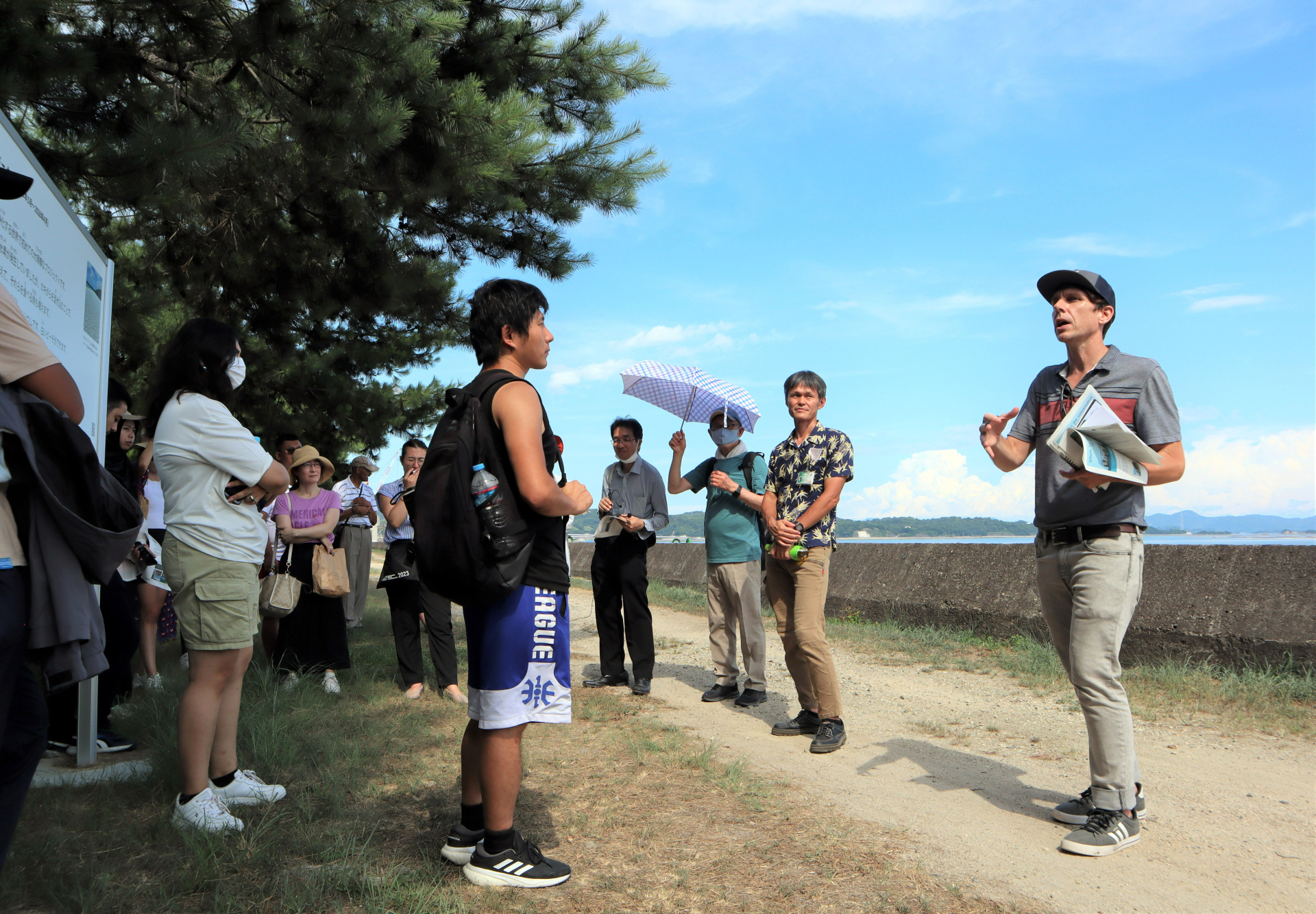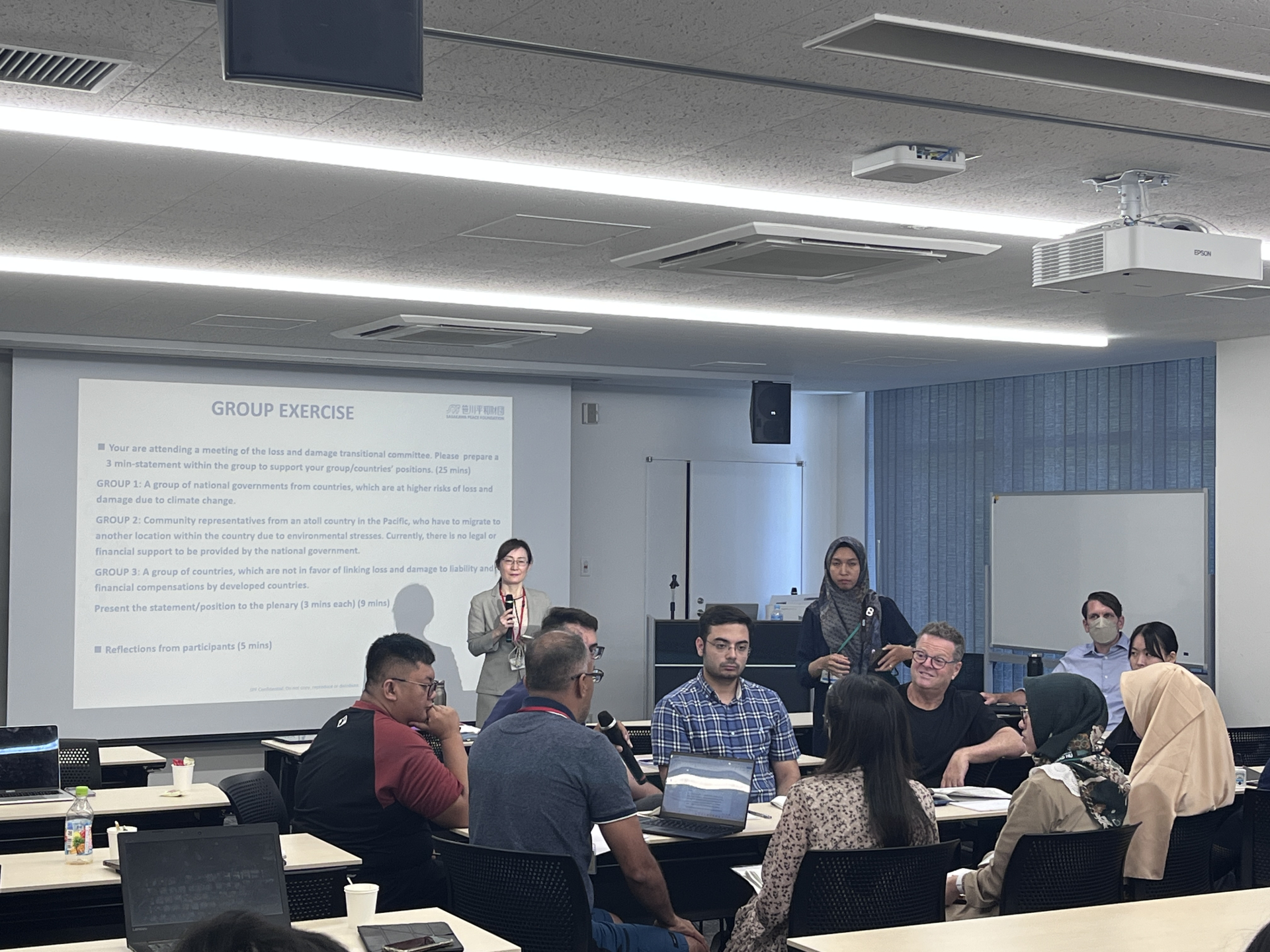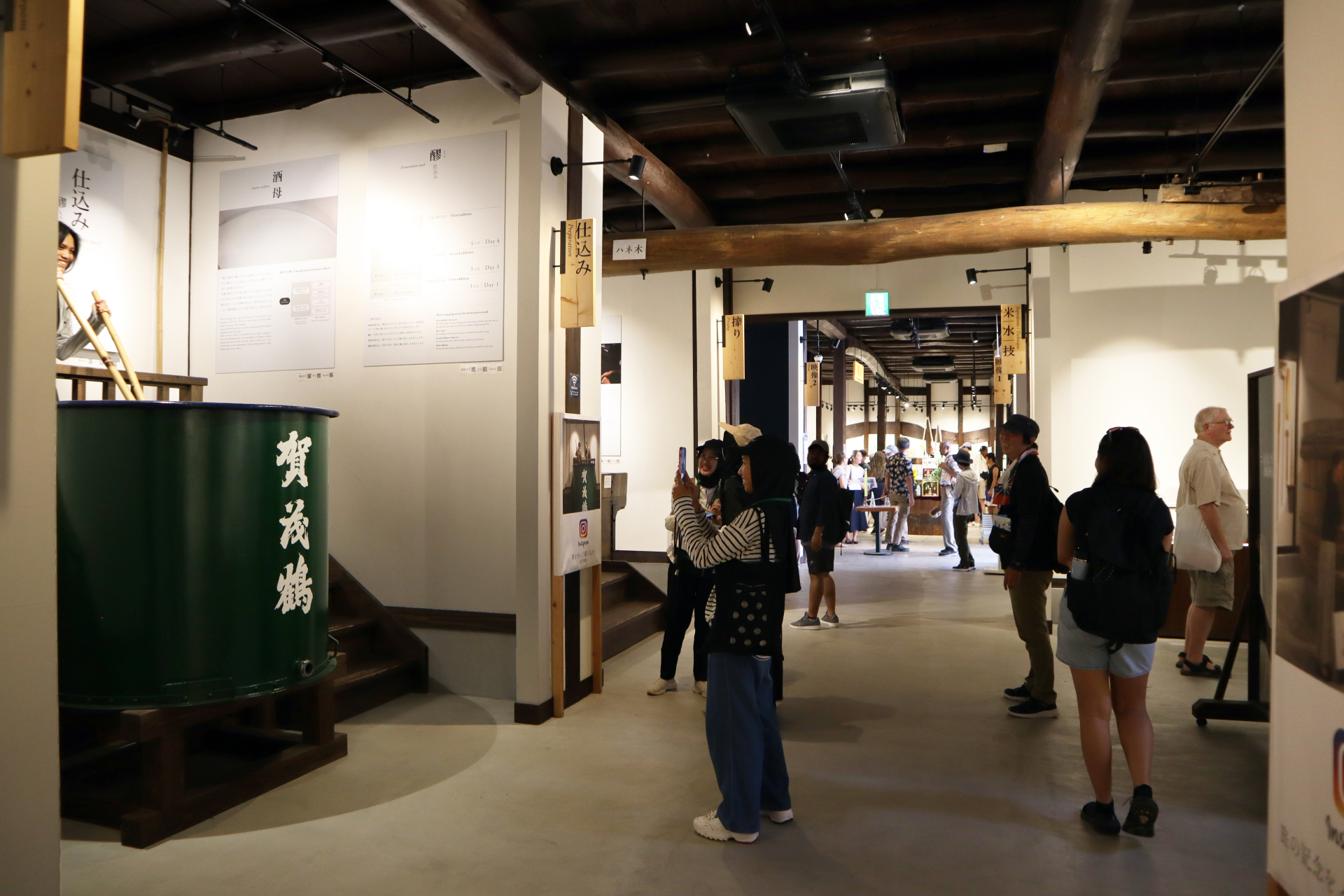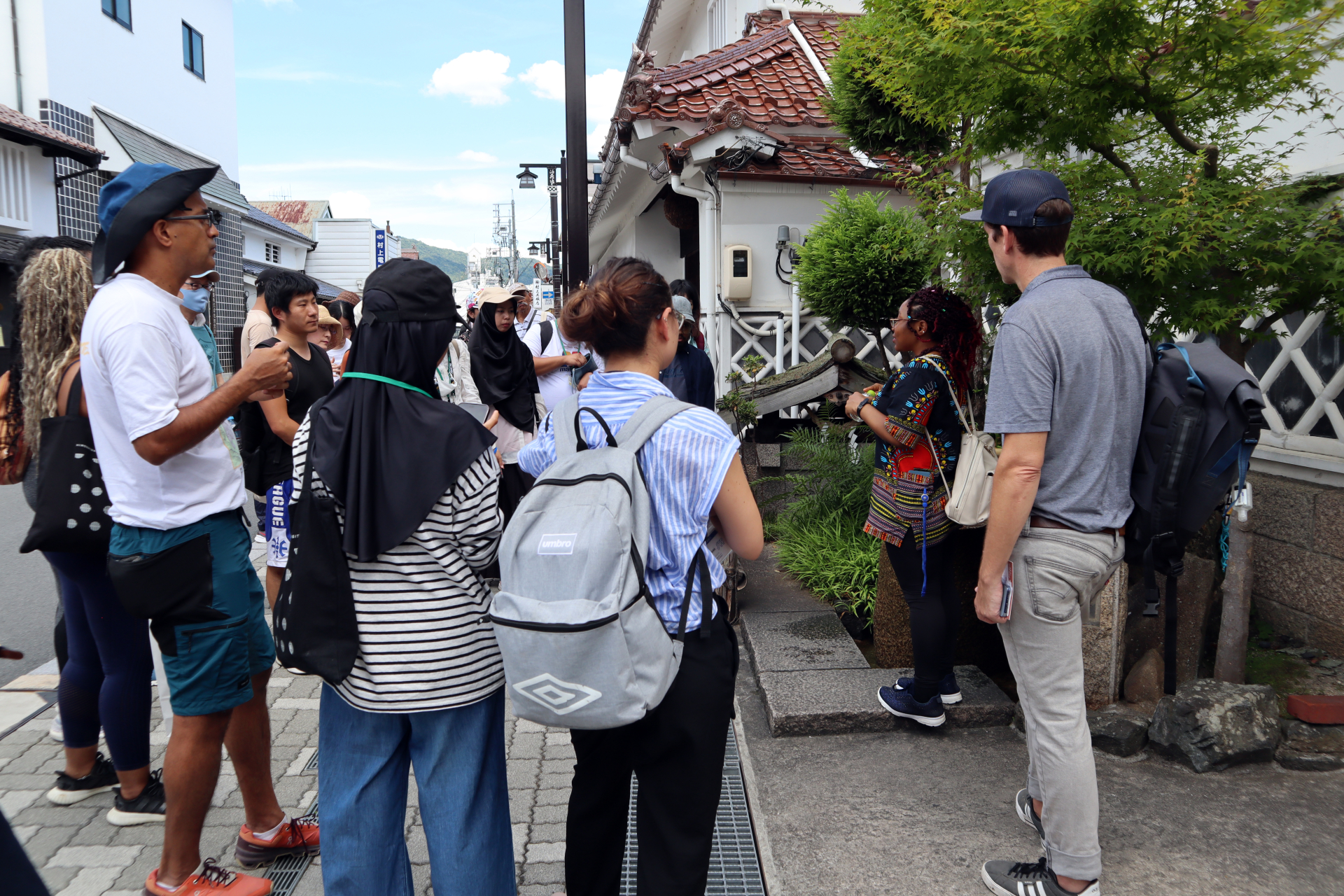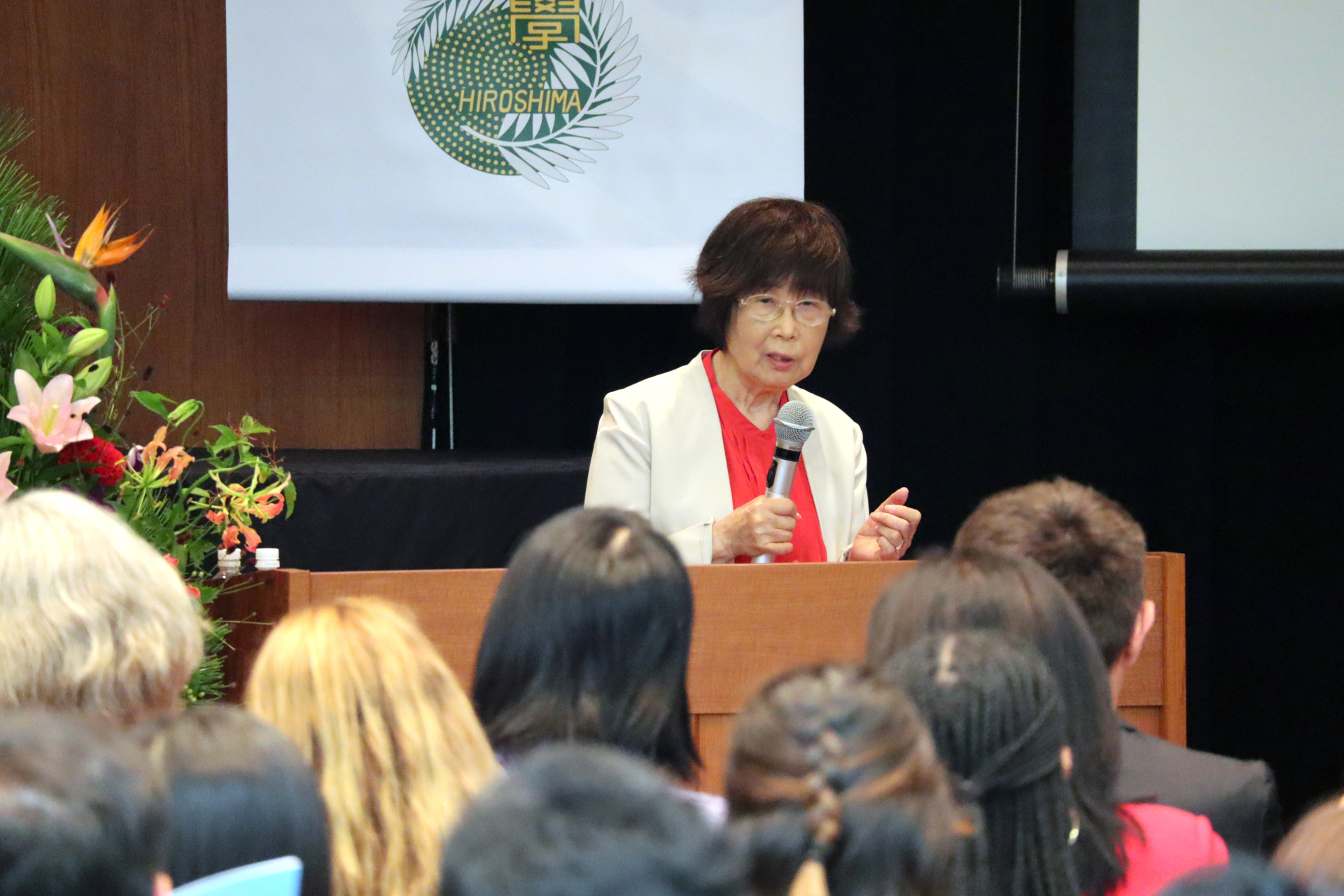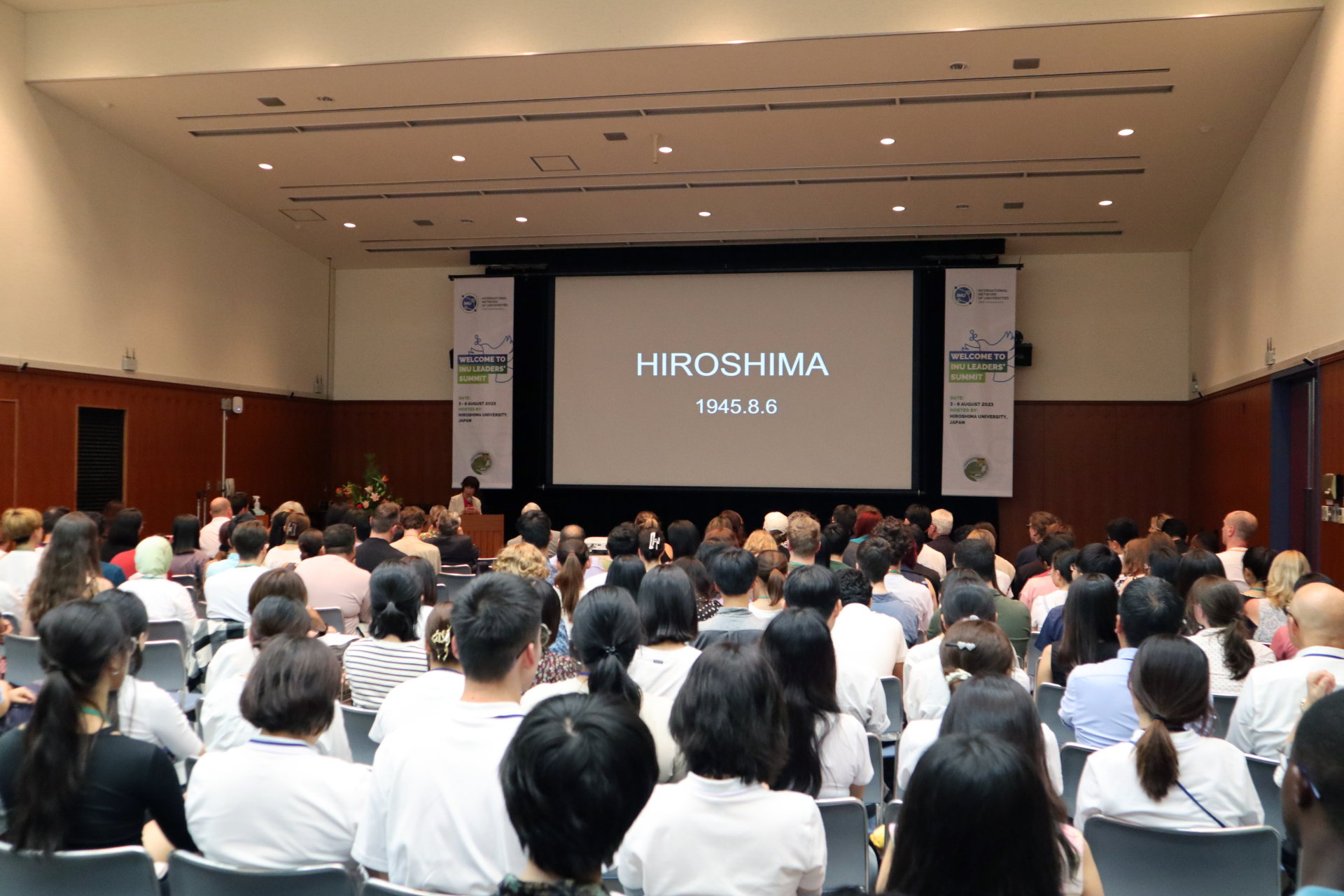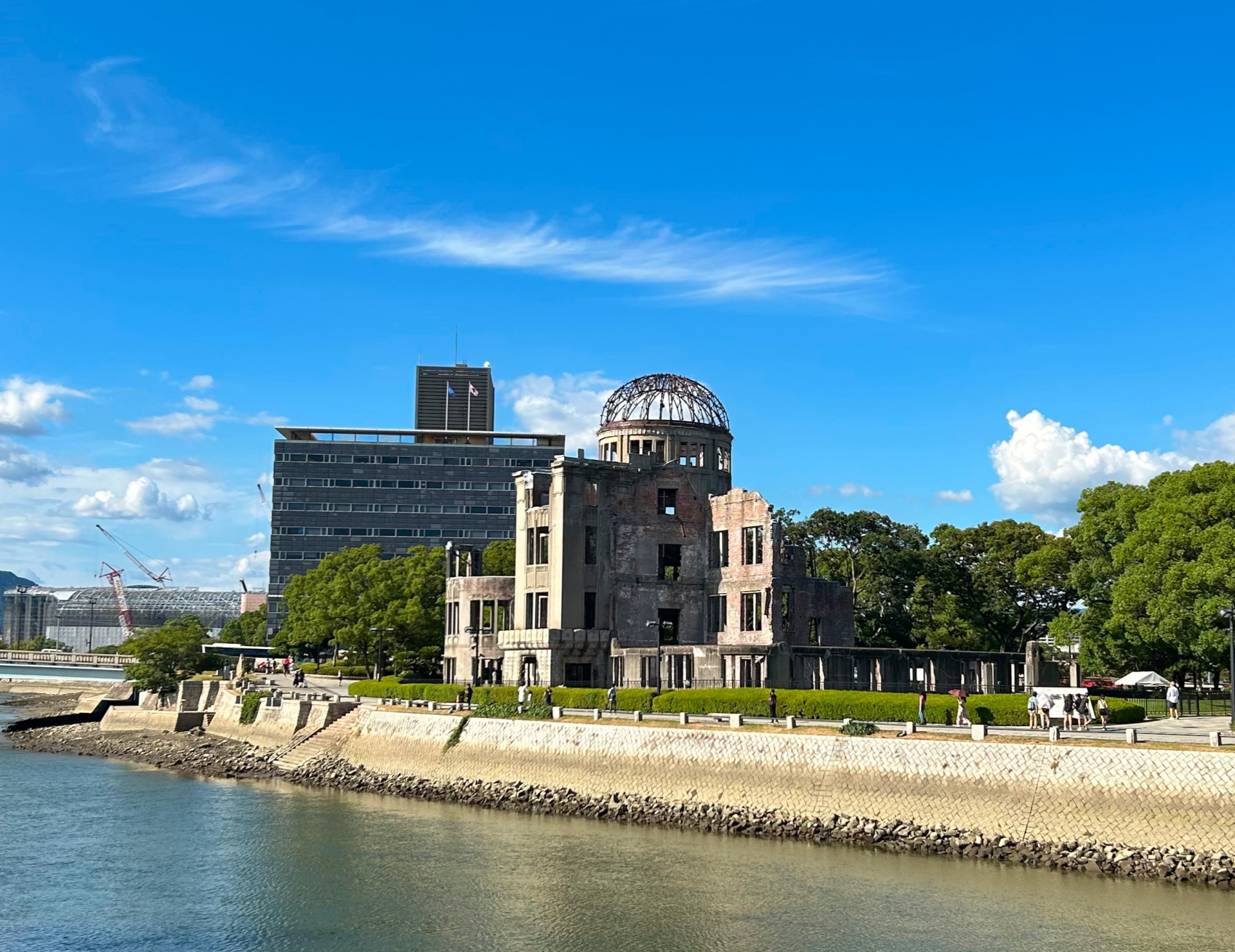After visiting the museum and Hiroshima City Naka Incineration Plant, a waste processing factory project promoted by an
initiative to rethink city planning following the A-bomb devastation, master student Mohammad Mahdi Khazaei from the School of International Relations reflected on the reconstruction and resilience of Hiroshima City. “We can see the progress of the city after that year [1945]…and somehow it has a lot of emotional impact on us. The city is really beautiful, even after that disaster,” he said.
Amongst the lecturers and field visits, group work and collaboration were heavily emphasized throughout this program. Aida Nuraida and Wirianisa Syifai, both of whom are studying at Universitas Islam Negeri Syarif Hidayatullah Jakarta, agreed that a valuable lesson they have taken from this course is collaborating with a group of diverse participants and building relationships. They enjoyed hearing new perspectives about the SDGs-related problems that each country faces and are inspired to share this knowledge when they return to Indonesia. Ms. Nuraida plans to continue her studies on peace and social justice and conduct workshops and seminars to pass down the lessons they learned to their peers, friends, and families. “This type of program is not commonly available, so I am glad that I had the opportunity to study the SDGs," she said. Ms. Syifai added that "it was challenging to communicate in English, but I was left feeling inspired when meeting many experts in different fields."
Another student who is finishing his master's degree in public policy also enjoyed having the opportunity to exchange ideas with students from diverse backgrounds. Reflecting on how to apply the theories presented in the lectures to his home country of Myanmar, he commented that “if we can reinforce positive peace not only to leaders but also to the public, I think we can reconcile people from different ethnicities and backgrounds.” Moving forward, he hopes to use some of the tools and knowledge he obtained from this program to hold workshops and bring different stakeholders to share ideas and build trust.
